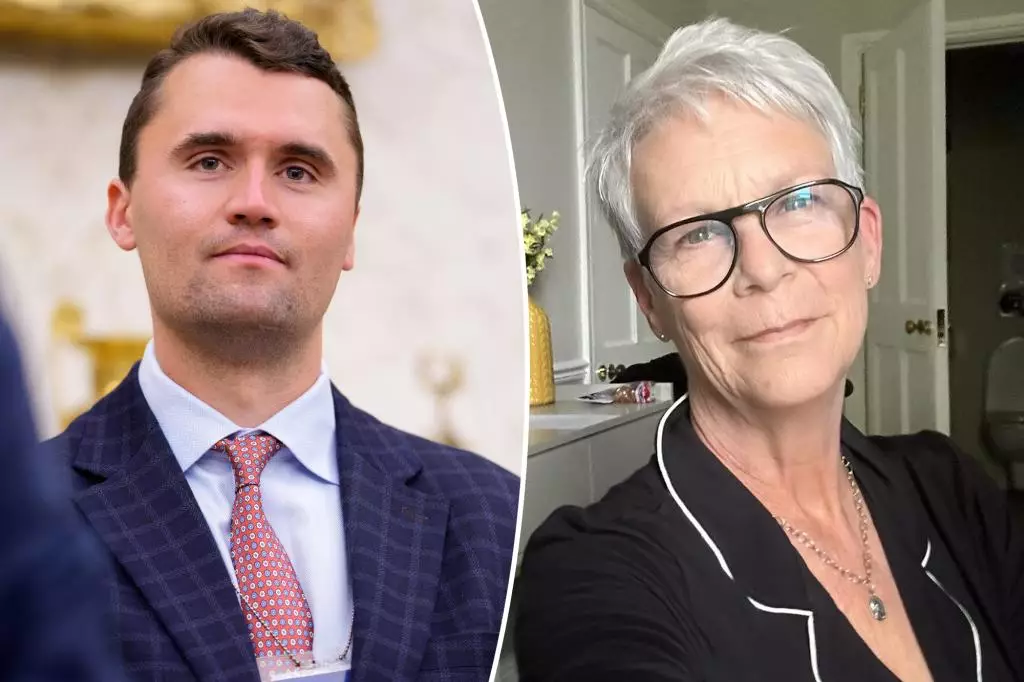In a culture often driven by polarized opinions and superficial reactions, Jamie Lee Curtis’s emotional response to the death of Charlie Kirk serves as a poignant reminder of the depth and complexity of human empathy. Despite holding starkly contrasting views—she openly admits to opposing Kirk’s ideas—her capacity to mourn the loss of a fellow human being underscores a vital truth: empathy transcends ideological boundaries. In a world increasingly desensitized by violent imagery and relentless negativity, her heartfelt acknowledgment of faith and humanity in someone she disagrees with challenges us to reconsider how we process tragedy. It’s easy to dismiss those we avoid agreeing with, but Curtis’s vulnerability reveals a mature perspective—one that emphasizes shared human dignity over political differences.
The Psychological Toll of Violence in Media
Curtis’s critique of society’s bombardment with violent images hits at a disturbingly relevant concern. The constant exposure to traumatic footage—whether it be footage of terrorist attacks, mass shootings, or political violence—dulls our emotional responses over time. When, as a society, do these images cease to shock us and begin to simply fade into the background noise of everyday life? Curtis’s reflections on witnessing repeated images of destruction and death resonate deeply because they challenge us to think critically about our mental health. The psychological effects of watching death and suffering repeatedly can lead to numbness, desensitization, and emotional exhaustion. This cognitive fatigue may diminish our capacity for genuine empathy and understanding, making it easier to dismiss violence as an unavoidable part of modern life, rather than a profound crisis needing compassionate engagement.
Memory, Trauma, and the Role of Cultural Narratives
Curtis mentions her personal connection to the date of JFK’s assassination, tying her own identity to a history marked by violence. Such historical references serve as a reminder that collective traumatic memories are embedded into our cultural fabric. These memories influence how societies process subsequent violence, shaping collective attitudes that often oscillate between denial and hyper-vigilance. The normalization of violence—through repeated imagery and media portrayal—creates a distorted perception of danger, fostering either overreaction or emotional numbing. Curtis’s emotional response points to a deeper need for society to grapple with trauma consciously. Recognizing our shared vulnerability might be the first step toward healing collective wounds, transforming our reactions from reflexive horror to meaningful dialogue and action.
The Moral Dilemma of Justice and Humanity
The tragic killing of Charlie Kirk prompts urgent questions about justice, punishment, and the nature of humanity. Questions of whether the shooter should face the death penalty evoke intense moral debates, yet Curtis’s perspective seems rooted in a broader human compassion. Her acknowledgment that Kirk was a man of faith, despite disagreement, suggests a belief in inherent dignity regardless of individual actions or beliefs. This attitude is vital; it pushes us to think beyond retribution and consider the possibility of restorative approaches. While society grapples with justice for perpetrators of violence, Curtis’s emotional response reminds us that at the core of these events are human lives—each with hopes, fears, and familial bonds. Recognizing this should motivate us to develop systems that prioritize understanding, healing, and the acknowledgment of shared humanity over vengeance.
Reevaluating Society’s Relationship with Violence
Ultimately, Curtis’s candid words serve as a call to reevaluate the societal approach to violence and its aftermath. We stand at a crossroads where entertainment often glorifies or trivializes suffering, and media saturation conditions us to become passive observers. Her fear of becoming “inured,” or emotionally numb, warns us of the destructive complacency that can pervade modern consciousness. To foster genuine compassion, society must confront the sources and impacts of violent imagery, cultivating environments that promote healing and reflection rather than spectacle. By doing so, we reaffirm our commitment to respecting human dignity, even in the face of tragedy. Curtis’s vulnerability challenges us to rise above superficial reactions and engage with empathy as a powerful agent for societal change.

